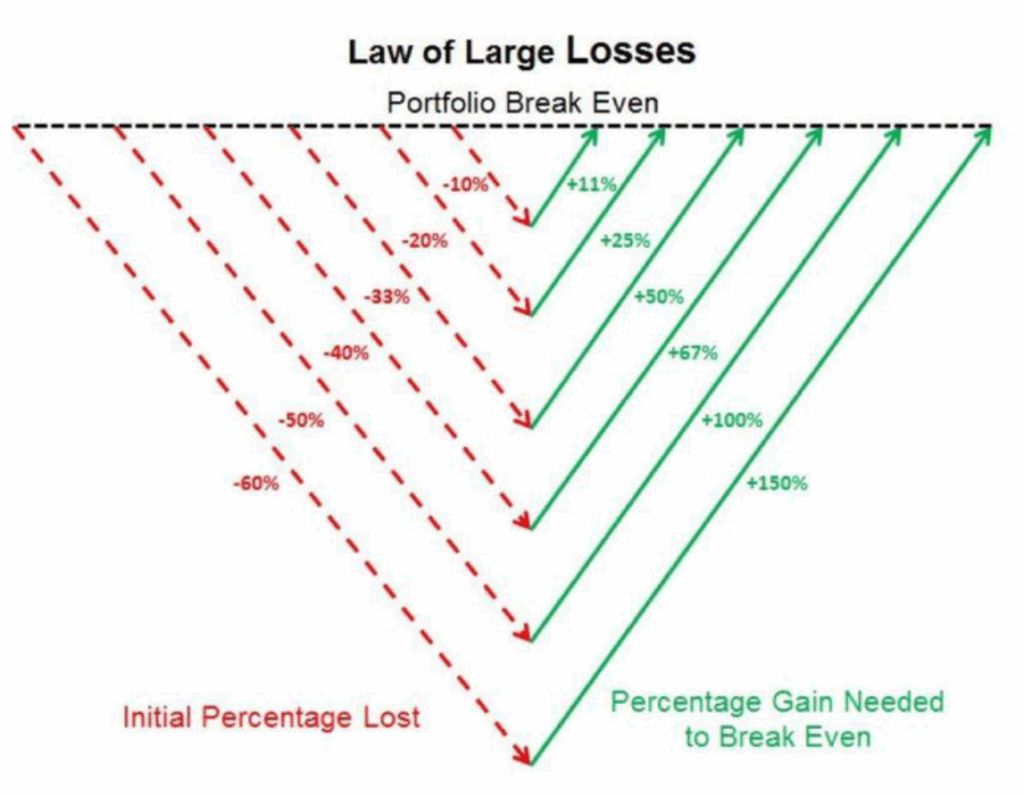Don’t Let Your Portfolio Fall Too Deep
When building a successful long-term portfolio, one simple yet powerful principle guides you: avoid allowing your portfolio to fall too deeply into losses. The deeper the decline, the harder it becomes to recover. For instance, if your portfolio declines by 60%, you will need a 150% gain just to return to your original investment. A 40% drop requires a 67% gain for recovery, whereas a fall of only 10% necessitates just an 11% gain to get back on track.

Source : Ronnie Stoeferle
The Power of Small Losses
This demonstrates that keeping your losses small is crucial for protecting your long-term returns. It’s not only about how much you gain but also how effectively you avoid significant losses. A small decline is easier and quicker to recover from, but once losses become substantial, the climb back becomes much more difficult and lengthy.
A Real-Life Example for Better Understanding
Think of it this way: if you fall into a small pit that is only 5 feet deep, you might struggle briefly, but you can still climb out and continue on your way. However, if you tumble into a 20-foot pit, escaping on your own becomes significantly more challenging. This analogy perfectly illustrates how portfolio losses work—the deeper the loss, the harder it is to recover.
Act Quickly to Cut Losses
This highlights the importance of exiting poor investments early. The longer you remain trapped in losing positions, the more your portfolio suffers. Accepting a small loss and moving on is better than hoping for a turnaround while the damage escalates. By keeping your drawdowns shallow, you enhance your prospects for long-term success.
Protecting Your Portfolio is Key
Long-term investing isn’t solely about weathering market fluctuations; it’s also about safeguarding yourself against major downturns. A skilled portfolio manager or investor always aims to minimize losses swiftly. Following this straightforward rule can significantly impact your investment performance over the years.
Do you manage your portfolio with this approach? Share your thoughts in the comments below! And if you found this blog helpful, please SHARE it with your friends!










